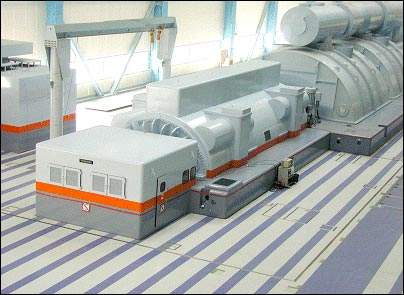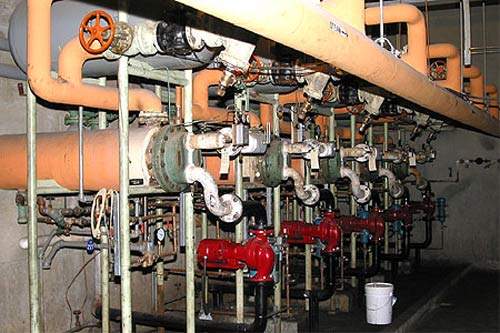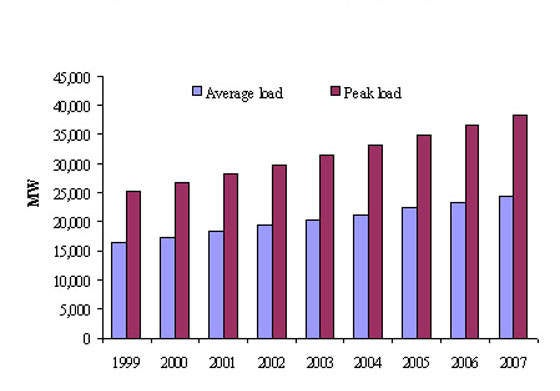Taipower plans to replace the generator setups in the 2,200MW Taichung power plant to improve efficiency and reduce CO2 emissions. The power station was named the world’s biggest CO2 emitter, with over 40 million tonnes over the last year. The original plant was joined in June 2005 and June 2006 by two additional 550MW coal-fired units built on adjacent land reclaimed by depositing ash. The two sub-critical pressure units (numbers nine and ten) are the same as the eight previously installed units.
The state-run Taiwan Power Company (Taipower) is responsible for production and distribution of electric power in Taiwan. The company has five coal-fired power stations, including Taichung. Coal accounts for the biggest slice in Taiwan’s energy requirement mix.
Taichung project description
Taipower’s Taichung project involves a 3,300MW coal-fired plant in Taichung, an industrial port city on the central western coast of the island. The new power station was required to support major local industrial enterprises and to provide power for a substantial expansion of port facilities to relieve overcrowded harbours elsewhere on the island.
The plant is adjacent to a four-unit, 1,930MW coal / oil installation and coal-receiving facilities completed in 1992. This brings the complex’s total capacity to 4,130MW, just below the Hsinta complex.
The cooling water discharge system for units one to eight had been designed to satisfy the prevailing environmental protection regulations. A study including the development of a complex hydraulic model was required to ensure the local marine environment could cope with additional cooling water discharges from the proposed new units and could meet tighter environmental restrictions.
Plant make-up
The project initially comprised four 550MW units. Three were completed in 1996, and the fourth in 1997. Investment value was reported but the cost was unlikely to have been much lower than $2.5bn. GE supplied four supercritical steam high power density (HPD) turbines-generators and auxiliary systems.
Local group BES Engineering carried out construction assignments. Chung Hsin Electrical Machinery manufacturing supplied gas-insulated breakers and switchgear for Taichung, as they have done for most major Taiwanese power plant.
Earthquakes demonstrated the fragility of the power transmission infrastructure in Taiwan. A strong earthquake aftershock, for example, triggered shutdowns of three units at Taichung. While two were quickly returned to service, the third unit was slightly damaged and needed repairs.
BKL Consultants made an analysis of field noise measurements of noise from reclaimers, stackers and other large equipment in the plant, and predicted the impact on the Taichung community. In 2003, HHI-EMD delivered three sets of main and start-up boiler feed pumps for unit 9 and unit 10.
Fuel supply
The eight units at Taichung have a total estimated coal requirement of around 12 million tonnes of bituminous and 2.5 million tonnes of sub-bituminous coal a year. Taipower operates a number of bulk coal berths in Taiwan.
Taichung has two 340m berths with 18m of draught alongside the berth, but with a 13m low water channel depth, the coal terminal is essentially limited to panamaxes.
Taipower bought 70% of its total coal requirements through long-term contracts. The remaining 30% was purchased on the spot market. The utility has been buying much of its long-term contract requirement from Australia, with the rest supplied from the US, South Africa, Indonesia and other sources.
Indonesia is the prime source of sub-bituminous coal, which is purchased on a yearly contract and has also won a good proportion of spot market contracts.
As Taiwan increases reliance on LNG, and independent power producers (IPPs) set up on the island, coal imports have fallen.
Taichung IPP project
In November 1997, Hi-Doer Power Company placed a $500m turnkey order for the equipment and construction of a 1,000MW coal-fired plant in the northern silting zone of Taichung Harbour with a Japanese consortium comprising Mitsui & Co, the Toshiba Corporation and Ishikawajima Harima Heavy Industries (IHI).
IHI supplied the plant’s boilers and Toshiba the two 500MW generators, while Mitsui was the project coordinator. The station began commercial operation in 2000. The plant’s electricity output was sold to Taipower under a 25-year power purchase agreement.







